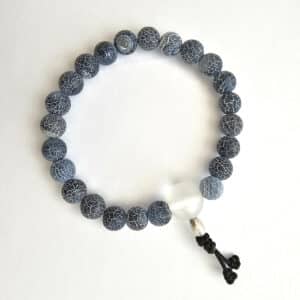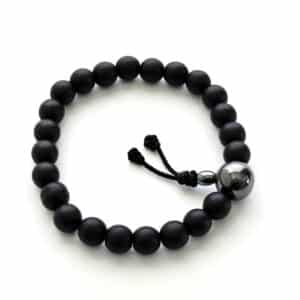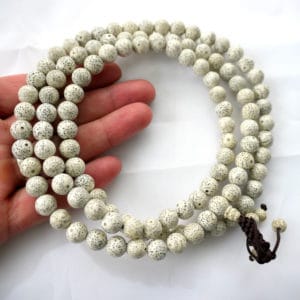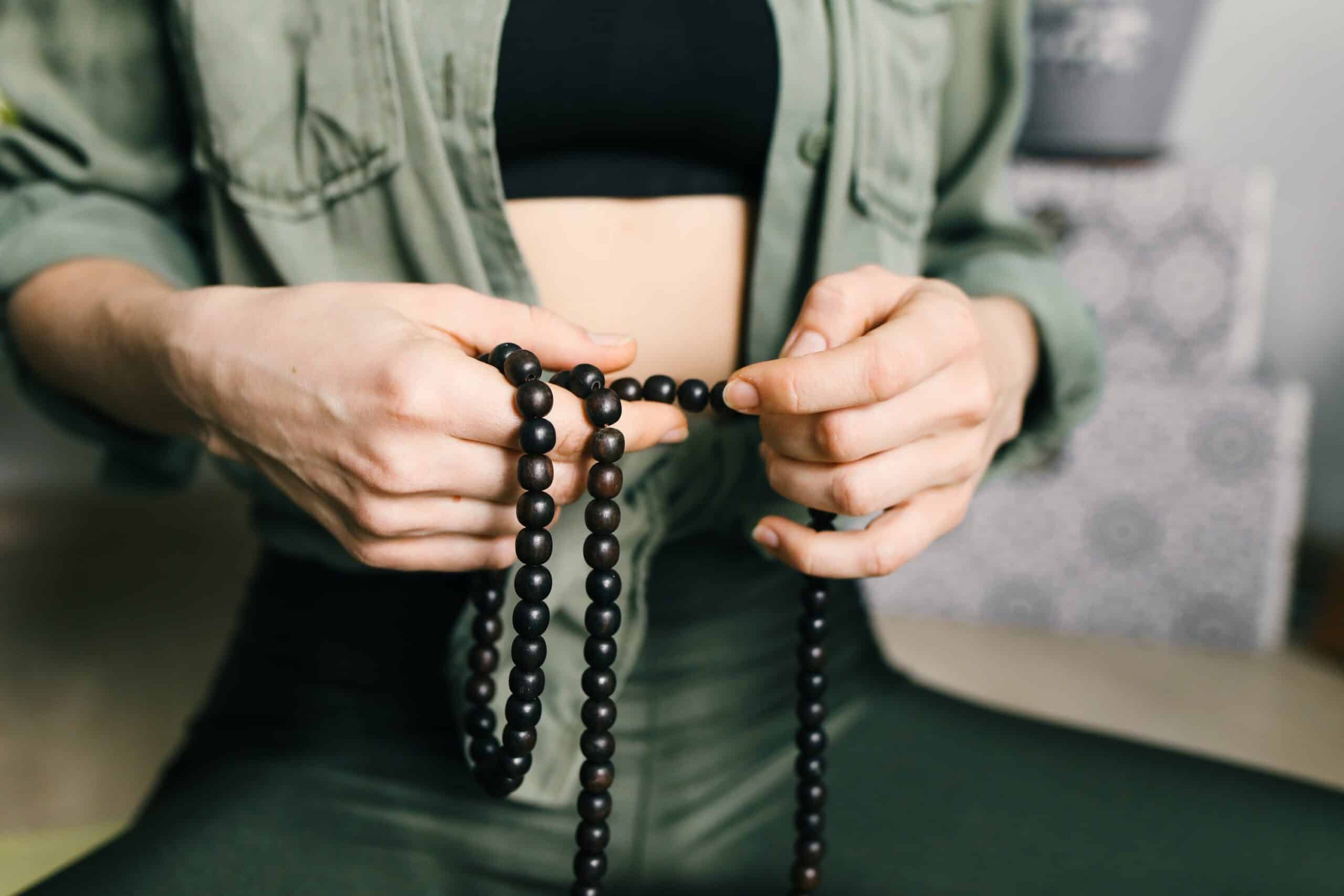
If you do meditation or yoga, you’ve probably seen mala beads before. These beautiful beads, often worn around the wrist, are not just fashion accessories; they can hold spiritual significance and serve as an aid to mindfulness practice.
Mala beads have a rich history deeply rooted in the religions of India, including Buddhism and Hinduism. They are similar to prayer beads from other world religions as well, like the rosary of Christianity and the misbaha of Islam. Today mala beads don’t necessarily hold a religious connotation. People often wear them as part of meditation or mindfulness practice. People may also wear them simply because of their aesthetic charm.
In this guide, we’ll explore the origins, construction, and uses of mala beads.
What are mala beads?
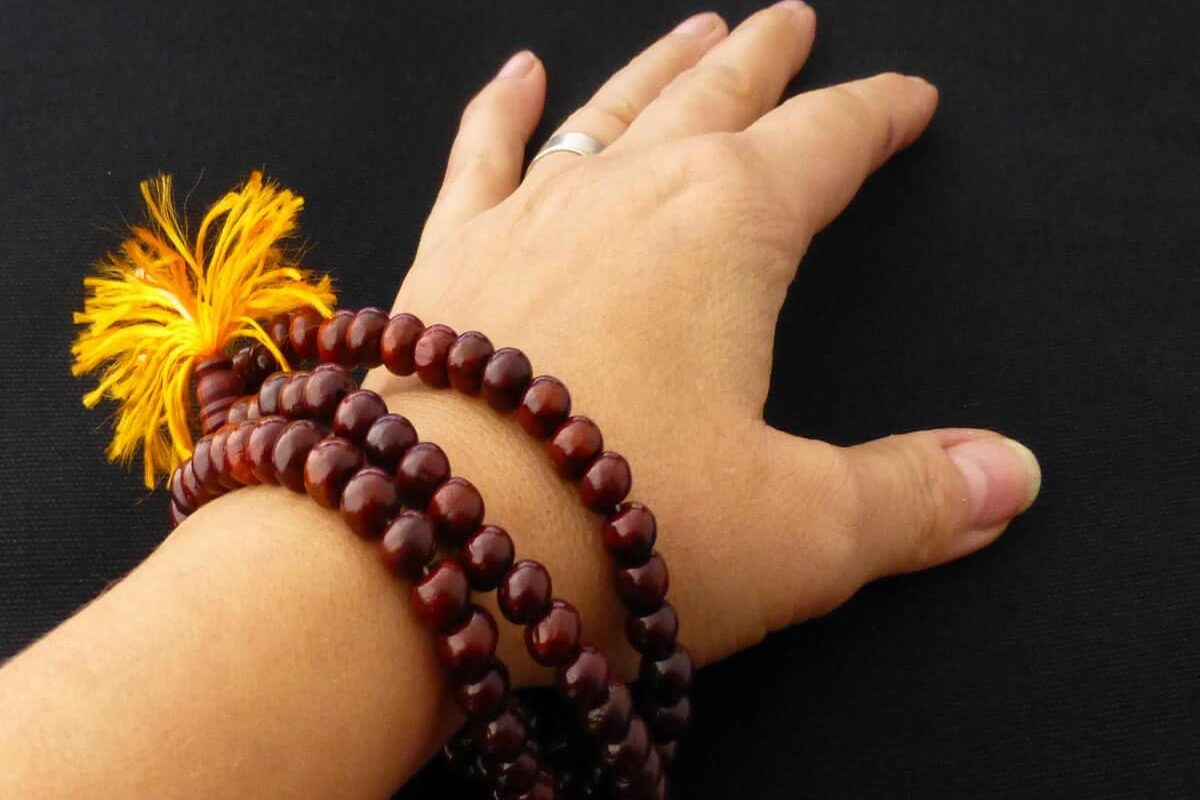
Known as japamala, prayer beads, or Buddhist beads, mala beads originated in ancient India, where practitioners of Buddhism and Hinduism have used them for centuries. The term “Mala” translates to “garland” in Sanskrit, signifying a string of beads used for prayer and meditation.
They typically consist of 108 beads, a sacred number in many Eastern traditions. (If you read our blog post on Buddhist New Year, you’ll notice that 108 is also the number of times that Buddhist practitioners ring the new year’s eve bell during the joya-no-kane ceremony).
The beads are strung together, and a larger bead, known as the Guru bead, marks the beginning and end of the Mala. The beads can be made from various materials such as wood, seeds, gemstones, or precious metals, each carrying its own symbolic significance.
Lotus seeds are evocative of enlightenment, as the lotus plant has a long history as a Buddhist symbol. While in ancient Egypt and Rome warriors wore Tiger’s Eye into battle for protection. It is known as the stone of courage. Black Onyx is also known for its protective properties, and symbolizes strength, decisiveness, and the ability to balance polarities.
How to use mala beads
Using Mala beads in meditation involves repeating a chosen mantra or focusing on the breath with each bead. The process starts at the guru bead, and as the practitioner recites the mantra or completes a breath cycle, they move to the next bead. This continues until the practitioner completes the full circle, reaching the guru bead again.
The tactile sensation of moving the beads helps anchor the mind, creating a rhythmic and meditative experience. This practice enhances concentration, mindfulness, and spiritual connection.
Products available from Still Sitting
We offer two styles, each style comes in a variety of beautiful materials including, wood, stone, lotus seed, and gemstone. The choice of materials reflects the wearer’s spiritual inclinations.
Long mala beads
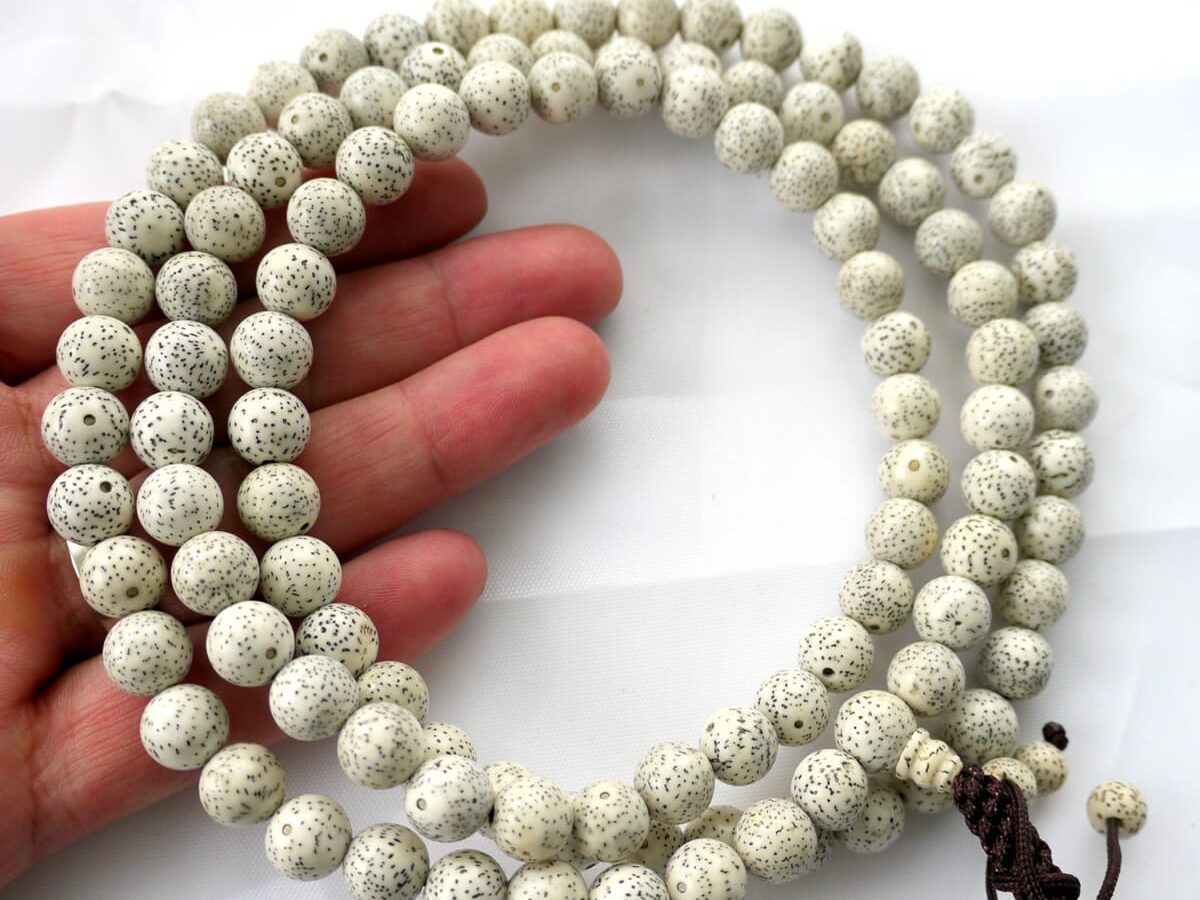
Long mala beads are a traditional and versatile option. These mala beads are constructed with the traditional 108-bead count. Pepole wear them around the neck or wrapped around the wrist multiple times. Crafted with precision and care, they are available in cedar, lotus seed, and verawood.
Wrist mala beads
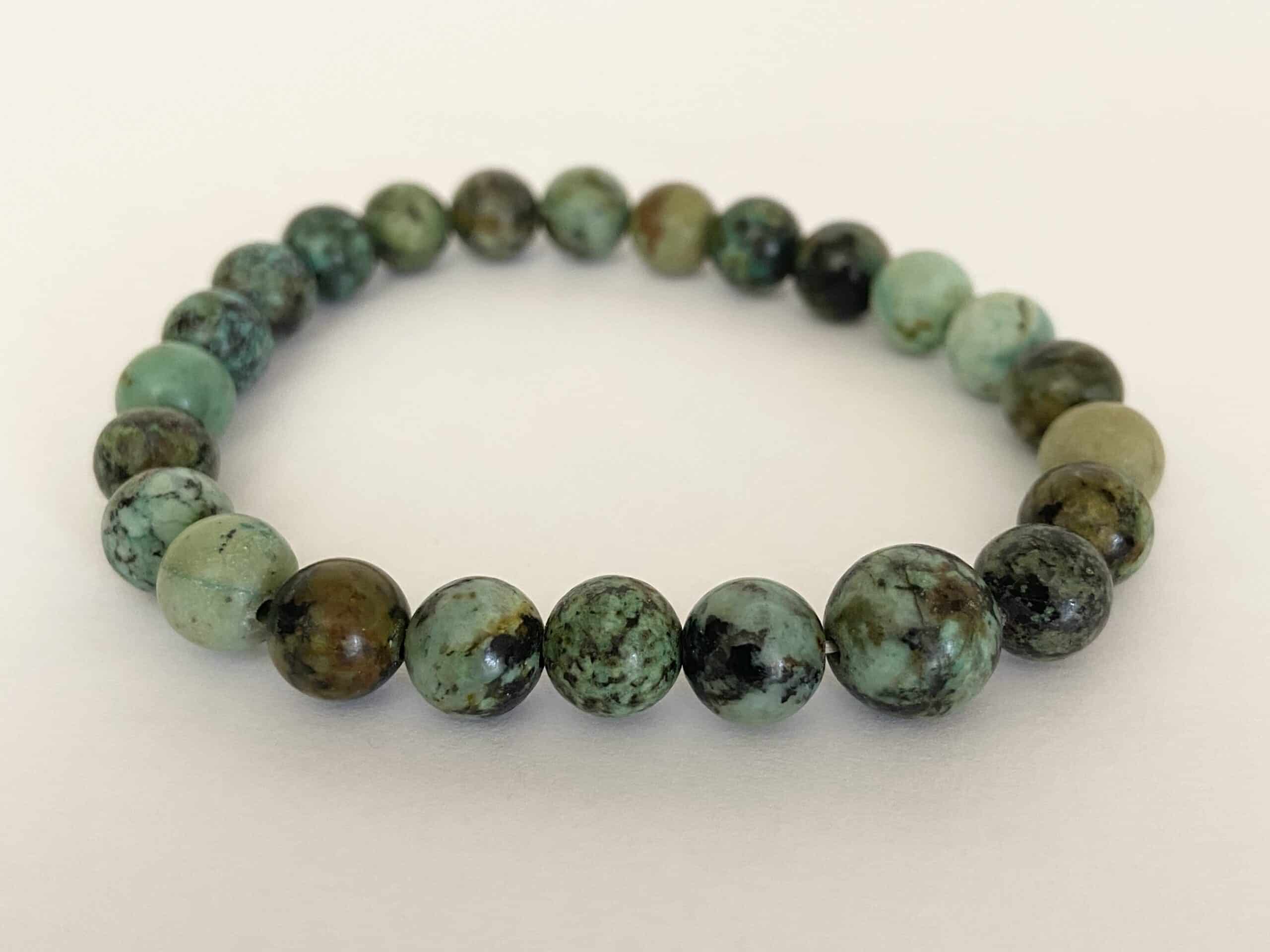
For those seeking a more compact option, we offer wrist mala beads. People wear them as bracelets, offering a discreet and portable meditation aid. These 24-bead malas are available in an array of beautiful materials including: jujube, obsidian, smokey quartz, onyx, cypress, tiger’s eye, and many more.
Choosing between long and wrist malas depends on personal preference and lifestyle. So, length and portability are two of the most obvious factors when choosing a mala. Long malas are larger and more visible. They make a statement! Meanwhile, wrist malas provide convenience and are more subtle, while still adding a touch of style.
Consider your daily routine and meditation preferences when making a choice.
Starting your meditation practice
Mala beads can be powerful tools designed to aid you in your meditation practice and journey. We offer a beautiful selection to cater to different needs, allowing you to incorporate these traditional accompaniments seamlessly into your life and practice.
Choosing which one is right for you will always depend on your own tastes and your practice. No matter your choice, these accessories can help to deepen your spiritual journey and enhance mindfulness. We are proud of the high-quality and material options we make available to you and hope you’ll choose the one that aligns with your preferences and aids you in the next phase of your practice.
-
Product on saleBlue Fire Agate Wrist Mala NEW!
$16.00$13.50 -
Product on saleBlack Onyx NEW!
$16.00$13.50 -
Lotus Seed Long Mala$56.00

